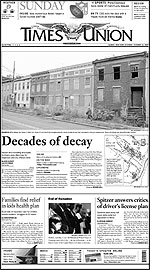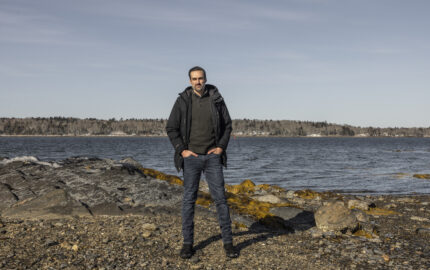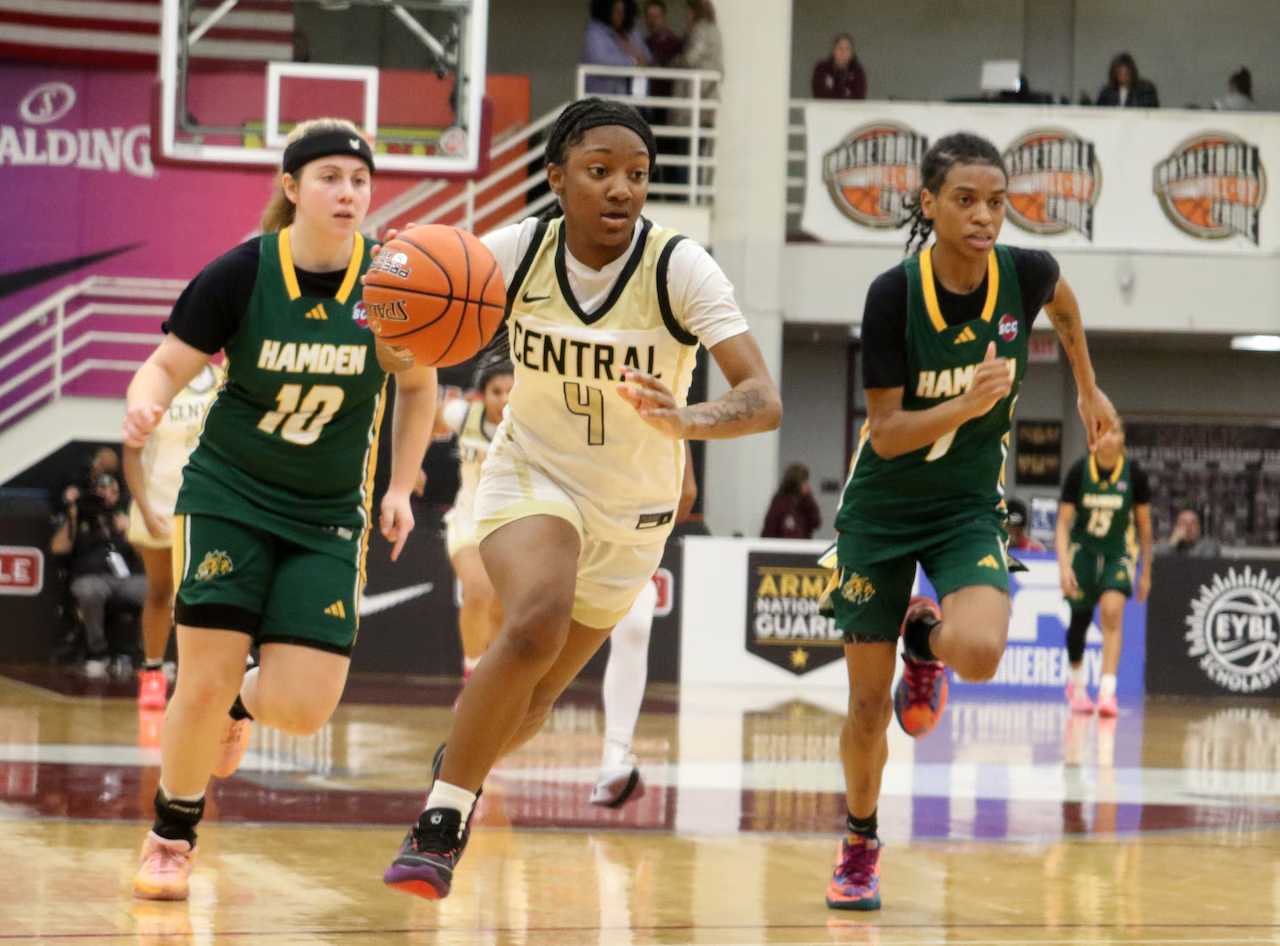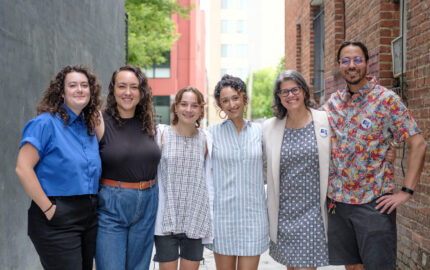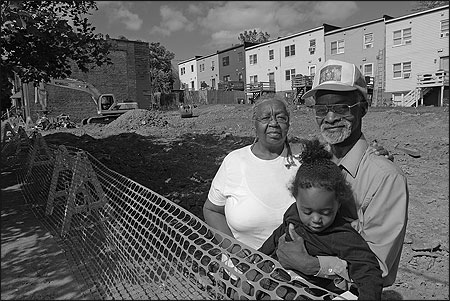
Oh, how I sometimes envy Harry.
Harry Rosenfeld was an honored predecessor of mine. When he became editor of the Times Union in the late 1970’s, he was about the same age I was when I got the job in 2002. He proved to be a smart, tough editor. What I envy is this: Harry’s major task during his 16 years in the editor’s chair was to work each day to create a better newspaper for our community.
It sounds almost quaint. Noble, in fact.
That’s my job, too, but I also have another one: to grapple with just what a newspaper is supposed to be these days, not to mention what it’s going to be a decade or so ahead. A newsroom deserves a leader with smart strategic objectives and a clear path to achieve them. But that seems harder now than it was when we all knew what constituted a good newspaper. Is it a mark of weakness, or simply recognition of reality, that the longer I work at this job, the less sure I am about what I ought to be doing?
Those of us in the newspaper industry today are struggling to redefine ourselves, even as we remake ourselves. We’re constantly told that we’re too late already and that we haven’t been innovative enough—too slow to adopt new technology or to stretch across media platforms—and that we’re on the road to irrelevance.
I don’t think so. Optimism is a fundamental of leadership, but the hopeful conclusions about what a midsized newspaper like ours ought to be are genuine. Other newspapers have undeniably moved faster than the (Albany, N.Y.) Times Union to adopt some of these tactics, but perhaps we’ll execute better if we’re not first around the block. I’m lucky to have had a bit more breathing room than some editors, because I work for a privately held media company, Hearst Corp. While financial objectives are just as important to the folks in the Hearst Tower in Manhattan as they are to the people who run Gannett and Tribune, we don’t need to impress shareholders by cutting RELATED WEB LINK
“Decades of decay”
– timesunion.com/
RELATED ARTICLE
“The Decline of Newspapers: The Local Story”
– Thomas E. Pattersonspending and announcing new profitable initiatives each quarter. And if our best efforts prove misdirected, we have the resiliency to adapt.
We have long held the view that our powerful local brand will sustain us in print and online if we make the right content and delivery choices. That notion was reinforced by a study released this summer by Harvard’s Shorenstein Center on the Press, Politics and Public Policy that discussed how the Internet is redistributing the news audience. While the study warned that the Web is a threat to daily newspapers, it also pointed to the power of newspapers’ brand names as providers of local news in their communities.
The power of our brand, built in print during the past 151 years, can be sustained in the newspaper and enhanced online if we focus on certain types of content—a focus that is necessary, in any case, because resources are shifting away from newspapers’ profitable core product. Market research in our community confirms some of the decisions we have made about this.
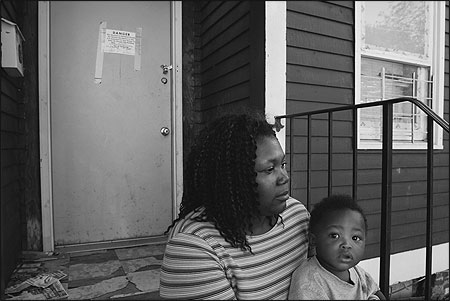
New Strategies
- Expanded commitment to high-impact watchdog journalism: In most communities, nobody but the daily newspaper can do this kind of work. It is worth sacrificing other areas of coverage to make an investment in journalism of verification and serious investigative reporting. This is expensive journalism, but these are dollars well spent, from both a public service and brand-building perspective. Readers want somebody to stick up for them, and they value courage. Our recent report, “Decades of decay,” on residential blight within blocks of the state capitol, is the kind of reporting we believe builds our brand and fulfills the unique mission of the daily local newspaper.
- Aggressive efforts to improve reporting of particular interest to our community—state government and politics: Every community surely has a similar topic demanding a primary focus. As the dominant medium in New York’s Capitol Region, we see this as part of our fundamental mission. RELATED WEB LINK
“Political Piggy Bank”
– timesunion.com/During the last election cycle, nobody who hoped to be on top of what was going on in New York campaigns could ignore our most popular blog, Capitol Confidential, which was written primarily by one reporter and backed up in print. In 2006, we had to get a court ruling to pry information about pork-barrel spending out of the state legislature (and recouped $33,000 in legal fees from officials who had illegally blocked release of key documents), and in the process we firmed up our reputation for take-no-prisoners state government coverage. - Increased shift of breaking news to the Web: As we do this, we are also establishing our print product as the home of good interpretive and analytical work. By the time most people pick up the Times Union in the morning, they know what happened yesterday from the Web or from TV; our job in print is to tell them what they need to know to be smart today and ready for tomorrow. This will be even more true in a few years (though some readers still will get all their news primarily from the printed newspaper), so our course is clear.
The Times Union took an in-depth look at a crumbling neighborhood within blocks of the state capitol.On our front page now, most of yesterday’s top national and world stories appear in an abbreviated form along a rail; the only wire stories that bump local off the front page on most days are those that give readers unusual insight into an ongoing issue or trend.
It has been hard for us to get accustomed to breaking news on the Web when we know that content will be routinely swiped by competitors. Yet, during the past year, we have quintupled the number of stories we break online daily. Nor are we bashful in inserting an italic box in print noting the time our story broke on our Web site as a way to remind readers to check timesunion.com regularly if they want to keep up with news as it happens.
Local Imperative
Throughout our newspaper, content is relentlessly local. While our sports section still carries coverage of plenty of pro and college games, our beefed-up coverage of high school sports is one of the more popular destinations on our Web sites. Our Features section, no less than Metro, is filled with local names. Of course, even in our newsroom of 135 people, we don’t have enough reporters to cover every community effectively. So we must develop partnerships with weekly papers and relationships with capable stringers to sustain adequate hyperlocal coverage in many places. Is this as good as having a highly qualified daily reporter in every town hall? Rarely. Is this one of the tough choices an editor must make? Absolutely.
Some of these steps have required shifting resources.
- When an editorial artist left, we used the vacancy to hire a director of news research who had been both a librarian and a Microsoft project manager; part of her job is to lead acquisition and management of databases of great interest to people who live in our region. We’re pursuing the complete database of state criminal cases, for example, as well as overlaying satellite maps with databases on local land use decisions, so we—and our Web site users—can track the cause of pollution in Adirondack lakes.
- Editorial assistants have been shifted to an expanded calendar desk. And we have fewer people available for general assignment and lifestyle reporting so that we can use those resources to pay our investigation’s editor.
- A photo editor now spends a lot of time giving everyone in the newsroom basic training in videography (some receive extensive training in visual storytelling, as well) so such stories can find a home on the Web.
Our content choices reflect both print and Web demands, yet with each medium, our focus remains intensely local. Our newspaper’s Web site must be broad and bold, rather like the notion prominent a decade ago of a community portal. It cannot be a newspaper transplanted onto the Web; it’s a different medium with different uses and thus requires different content. In the coming months, key channels of content on our Web site will feature not only what our staff produces, but also a wide range of material from elsewhere, including appropriately labeled commercial content. Some of our hyperlocal news channels, for example, will include content from local weekly newspapers. Our entertainment channel will feature local bands and provide links to clubs where they are playing. Throughout the site, user-generated content sits alongside staff-written work, with each clearly differentiated.
A goal for news reporting on our Web site is to offer a lot of photography and video produced by staff and by users; some will be of the quality of a public TV documentary, but most of it will likely be no more sophisticated than YouTube. When we look at page views as a standard of value, we discover that most of our effort to produce sophisticated video for Web sites is wasted work. Web users tend to choose quick shots that depict reality over artfully executed longer-form video. Better not to force-feed high-quality video, but that should be an arrow in our quiver when topics demand it. And this is likely to be a consumer demand as Web use and technology evolve.
Newsroom Adjustments
To accommodate the new realities of news consumption, we’re also changing how our newsroom works so we can seamlessly create content for both print and the Web. A new content management system soon will replace our 15-year-old front-end and pagination system. But there’s a difference between our course and that in other newsrooms: Instead of changing our operations to match new technology—the typical approach when new computers arrive in a newsroom—we’re adapting the technology to match the workflow we have designed.
All of our news reporting and information gathering—from story budget to finished product—will contain audio and video, which will be sent through a digital repository we call the Interactive Database of Events, Assignments and Stories (IDEAS). Finished work emerges from this repository after being handled by people assigned to assemble both the print product and Web version. Readers will also be able to contribute to IDEAS. When necessary, their contributions, including photos, video and audio, along with that of staff reporters, will be handled by these editors with a sense of immediacy in posting them on the Web. We call our project inaugurating these changes “Prometheus,” named for the figure renowned in Greek literature as the great innovator.
This innovation marks nothing less than a revolutionary period in the history of our industry. Revolutions are usually pretty messy, and there’s little doubt that more blood will be spilled in newsrooms during the next decade or so. But this doesn’t mean either our fundamental principles or our core products will disappear. While the Times Union envisions its growth in years to come will primarily arise from online and niche products, we’re convinced there’s also a great future in the newspaper. During the next few years, we expect Hearst Corp., which owns the Times Union, to make an investment of tens of millions of dollars in a new press and mailroom in Albany. At the same time, Hearst is linked to developers of electronic paper technology, which are creating devices we can barely imagine now that might deliver our content in years to come. We’re not surrendering to an uncertain future on any platform.
That’s the approach an editor of any generation would take, I think. Maybe the job isn’t really harder than when my pal Harry sat in this chair. This much is the same: What we’re doing is vital for our community, and so we must do it well enough to survive and thrive.
Rex Smith is editor of the Times Union in Albany, New York.

